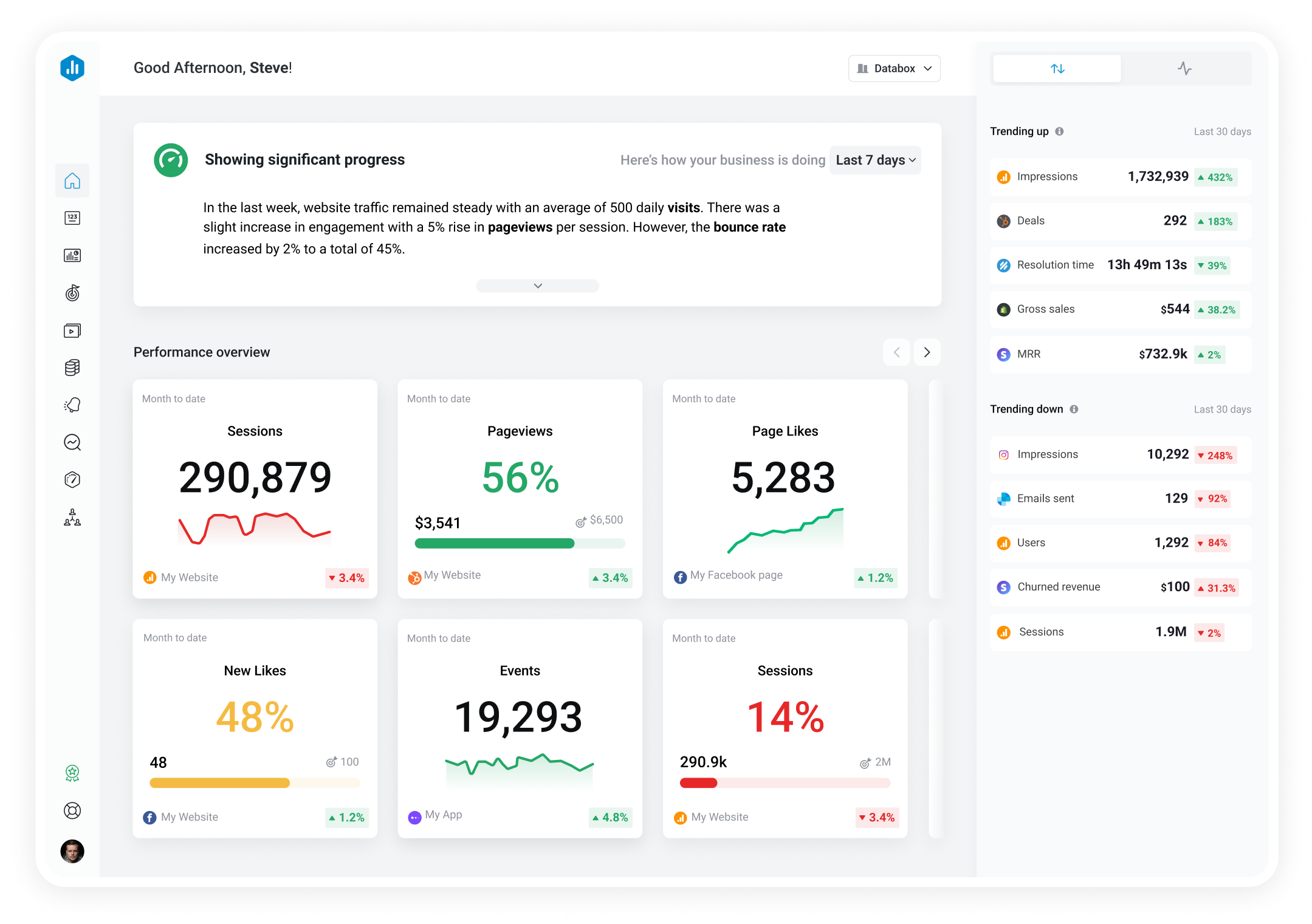Track all of your key business metrics from one screen
GET STARTED
 Xero
Gross Profit
Xero
Gross Profit Gross Profit is a financial metric that shows the profit earned by a business after deducting the cost of goods sold from its revenue. It represents the amount of money left after accounting for the direct expenses associated with producing and selling a particular product or service.
With Databox you can track all your metrics from various data sources in one place.
Gross profit is a financial metric that represents the amount of money a company earns from its core business operations after deducting the direct costs associated with producing or delivering its products or services.
It’s one of the most important metrics companies look at when analyzing their operational efficiency and cost-effectiveness.
You can calculate your gross profit by subtracting the cost of goods sold from the total revenue.
Here’s the exact formula:
Gross Profit = Total Revenue – Cost of Goods Sold
For example, if a company has a total revenue of $500,000 and the cost to produce the service is $100,000, we see that the gross profit amounts to $400,000.
Due to the wide range of factors that influence a business’s gross profit, we can’t really put a pin on what’s good or not. You need to consider things like industry, business mode, size, and the overall economy.
For example, a good gross profit margin in the aviation sector would fall in the range of 10-20%. In the consulting industry and similar service-based businesses, it can go up to 40%.
On the other hand, software companies have a higher gross profit rate, often in the range of 70-90%, due to the low cost of duplicating their service once it’s developed.
Here’s also some data directly from our product:
A good gross profit in QuickBooks is around $50,000 to $80,000, according to QuickBooks Benchmarks for All Companies.
A good gross profit in Xero is $44,000, according to Xero Benchmarks for All Companies.
If you want to stay on top of future trends and be able to instantly compare your performance to companies just like yours (in any given industry), you can join our Benchmark Groups – it’s free for everyone!
There is no one-size-fits-all approach to increasing your gross profit. Each business requires a tailored strategy based on its product, market conditions, and operational efficiency.
However, after talking with seasoned industry leaders, we’ve compiled a few strategies that can bring some solid results in each industry.
More resources to help you improve:

Used to show a simple Metric or to draw attention to one key number.

Used to illustrate numerical proportions through the size of the slices.

Used to show comparisons between values.
Databox is a business analytics software that allows you to track and visualize your most important metrics from any data source in one centralized platform.
To track Gross Profit using Databox, follow these steps:
 Goals
Goals Scorecards
Scorecards Metric Digest
Metric Digest Metric Builder
Metric Builder Data Calculations
Data Calculations Performance Screen
Performance ScreenThe Xero Profit & Loss (P&L) Overview dashboard provides a detailed view of income, expenses, gross profit, and net profit trends. It includes net profit breakdowns by type and visual comparisons of revenue vs. expenses over time.

This report gives a snapshot of financial results using Xero data on income, expenses, cash flow, balance sheet, and overall financials, supporting informed financial decisions.

Net profit takes gives a more granular view of your business’s finance. It deducts all business expenses, including operating expenses, interest, taxes, and cost of goods sold, from your total revenue.
Gross profit only deducts the direct costs associated with producing your goods or services.
While gross profit is displayed through a dollar amount, the gross profit margin presents this value as a percentage, showing the proportion of each dollar of revenue that you retain as gross profit.
Let’s say a company produces and sells high-quality laptops.
They manufacture each laptop for $500 and sell each one for $1,200. Thus, the gross profit for each laptop sold would be the selling price minus the cost to produce.
Gross Profit = Selling Price – Cost of Goods Sold Gross Profit = $1,200 – $500 Gross Profit = $700
For each laptop sold, the company makes a gross profit of $700.
